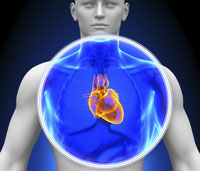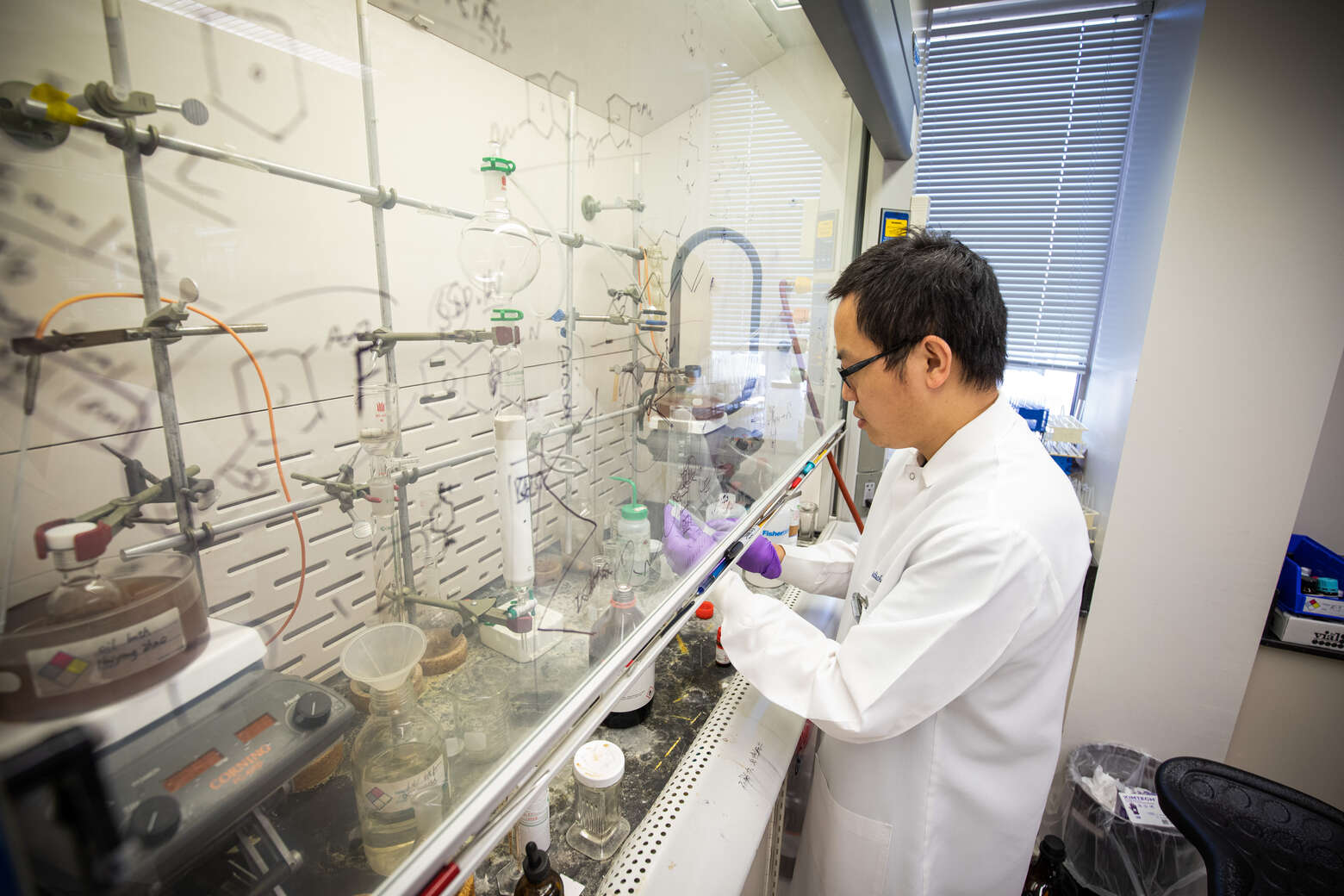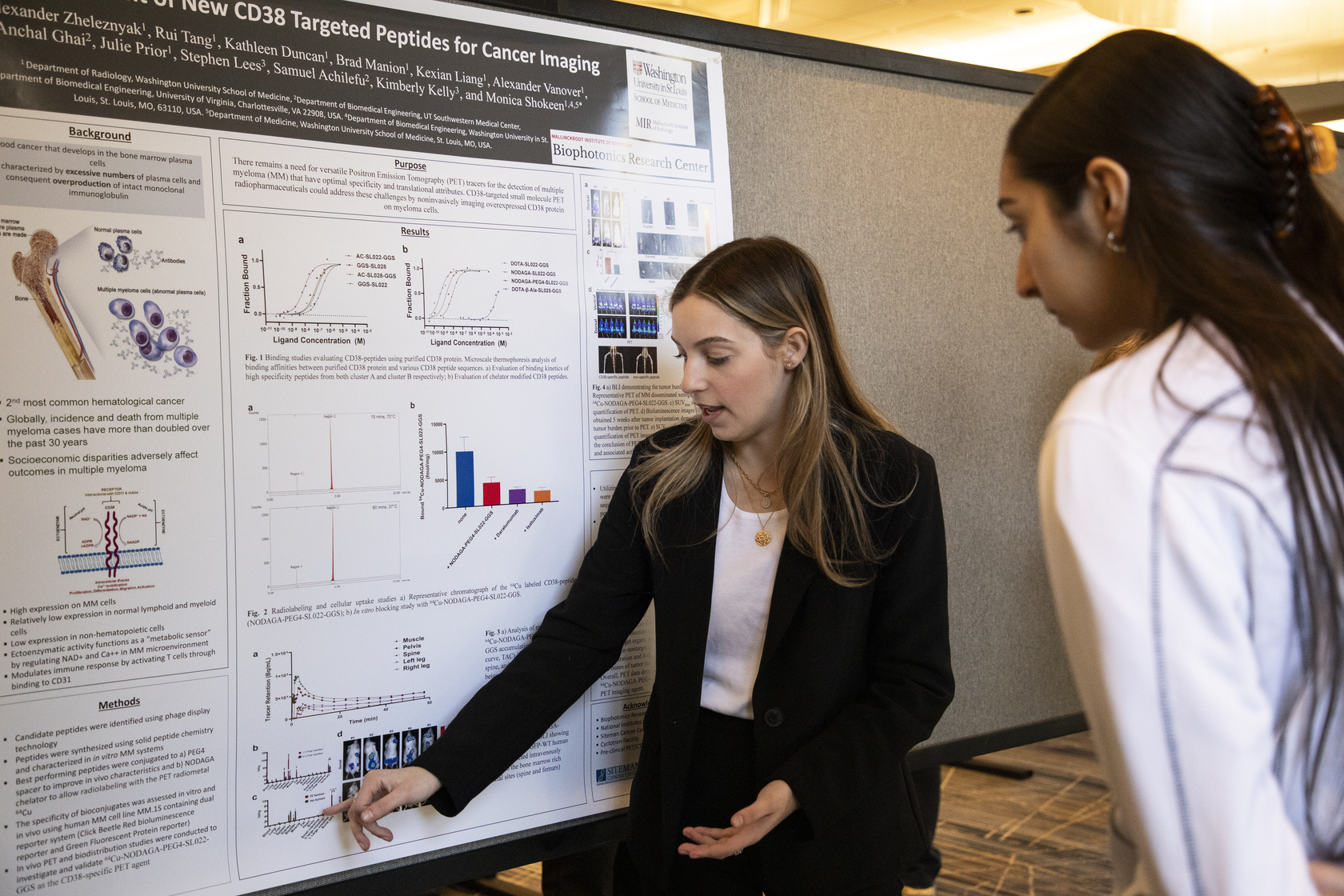Unexplained Chest Pain? A Cardiac PET/MR Scan May Help

A new imaging exam available at Mallinckrodt Institute of Radiology is helping to uncover the cause of long-standing, but undiagnosed, chest pain.
“The test is meant for people who have recurrent episodes of stable (i.e. non-worsening) chest pain,” says Pamela Woodard, MD, a professor of radiology who is also in charge of advanced cardiac imaging at MIR. “It’s not for meant for patients who have sudden-onset or acute chest pain. Those patients go to the emergency room,” she says.
The new test combines the blood flow information of a PET (positron emission tomography) scan with the imaging details of a MR (magnetic resonance) scan. “The PET scan is the most accurate method currently available to detect blood flow problems in the heart muscle, whereas the MR scan provides accurate detail of the heart’s structure and pumping capability,”says Robert Gropler, MD, professor of radiology and member of the Division of Nuclear Medicine. “An additional benefit is that both scans are performed at the same time, decreasing the time a patient has to spend undergoing imaging.”
The new imaging exam is being performed jointly by MIR’s Division of Nuclear Medicine and the Cardiothoracic Chest Section.
“The test takes about an hour to perform and involves the patient lying down and going into a scanner that looks like a tube. It involves some breath holding, some contrast dye and a PET tracer that looks at the blood flow to the heart,” Woodard says. The contrast dye and PET tracer combination allow radiologists to see which areas of the heart aren’t getting blood flow. “Patients will also receive a drug to make their heart speed up to simulate stress while undergoing the study.”
Patients are referred for the advanced imaging test by either their cardiologists or by contacting the Chronic Chest Pain Clinic directly for an evaluation first. The clinic is a program run by the cardiovascular division of the department of internal medicine at Washington University School of Medicine.
“From my perspective, the purpose of the cardiac PET/MR is to understand why people experience continued chest pain without having obviously blocked arteries,” says David Brown, MD, professor of medicine and director of the specialty clinic.
“It used to be thought that that more women than men experienced unexplained chest pain,” Brown says. “Now it’s more like a 50/50 split among men and women who are middle-aged or older, and have one or more risk factors, i.e. high blood pressure, high cholesterol, diabetes and/or smoking.”
Adds Woodard, “This is a test one would undertake when other methods aren’t supplying the information you need to make a diagnosis.”
“And not all unexplained chest pain is caused by blockages in the large arteries of the heart,” says Brown. “This test is currently the best way to examine and determine the function of the small arteries in the heart.”





